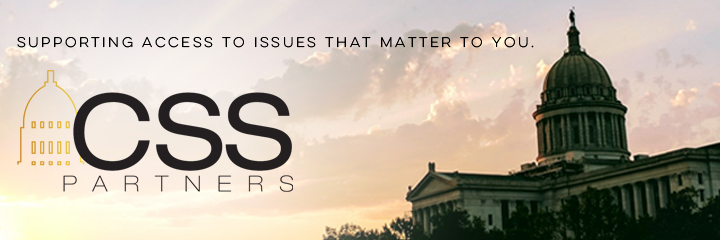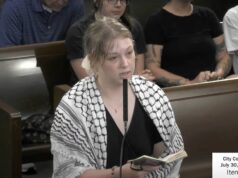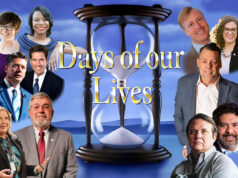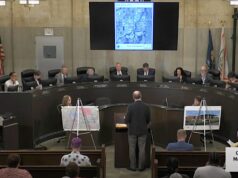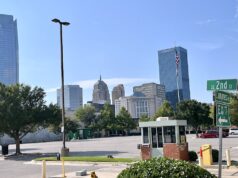During Tuesday’s meeting, Ward 2 OKC Councilman Ed Shadid pushed the City Council to engage in a “desperate act for a desperate time” and devote one quarter of a temporary MAPS penny sales tax to curb the exodus of teachers from the city’s schools. Another alternative, Shadid said, would be a temporary income tax to pay teachers more so they will “hang on for one more year.”
In arguing for the tax to help save our schools, Shadid noted the Brookings Institute’s warning that we are “running out of time.” Geez, he’s right: School support staff are paid as little as $13,000 per year.
‘Please be our knights in shining armor’
Notably, a diverse array of citizens appealed to the city to, “Please be our knights in shining armor.” As numerous teachers, parents and a medical professional warned the council during the meeting, we aren’t just facing an “unbelievable exodus of teachers.” Even a realtor, who cares enough to serve on the Eugene Fields advisory board even before her child is old enough to attend the neighborhood elementary school, expressed the fear she’ll have to join the exodus of families to the exurbs.
OKCPS School Board Chair Paula Lewis told the council the state’s per-student aid is only half the national average — only $12 per child per day. Lewis said that the purpose of the temporary $25 million tax is to “stop the bleeding.” It makes no sense, she said, to pave a street alongside a school slated for closure for budgetary reasons.
Rev. Lori Walke started her comment by “respectfully” requesting consideration of a tax increase but was actually making a “desperate, anxiety-ridden, panic-filled plea for help.”
“Our roads may be in bad shape, but our schools are worse,” said Walke. “Education is infrastructure. Education is infrastructure.”
Then, she urged the City Council: “Be our Magnificent Seven.”
MAPS options on the table
Two MAPS proposals are illustrative of the city’s options. One proposal would allocate 25 percent of the tax toward city services and 75 percent to new streets and re-paving old ones. The second proposal, MAPS 4 Neighborhoods, would use 50 percent of the revenue for city services, with 25 percent being used for roads and 25 percent to fund the Save Oklahoma City Schools proposal.
The way the city originally implemented MAPS was universally praised. It was understood that the state government had created a full range of messes that, hopefully, the city can help stabilize.
The audience present during Tuesday’s meeting recognized that our streets are in disrepair and the police need more funding. As Shadid said, the best political move would be to combine public safety with public schools as sectors to be funded in innovative ways.
Poll results reveal support for school funding
Shadid’s innovative approach to MAPS and stabilizing the city’s schools could be a political catalyst. Republican political consultant Bill Shapard revealed eye-opening poll results. (Full crosstabs available here.)
Shapard’s report shows:
Oklahoma City residents see the schools and the healthiness of the schools as critical to the vitality of the city as a whole. … If MAPS is going to continue, voters want the schools to be included.
The Sooner Poll sample was 60 percent Republican, and yet it showed that voters preferred the MAPS proposal that includes money for schools by two-to-one over a proposal that does not.
If the public wants the city to help save our schools, and if it is smart politics as well as smart public and economic policy, what is the argument against investing a modest portion of a temporary tax in schools?
Letter of the law versus spirit of the law
First, there are legal questions about whether the city is allowed to help fund operations as opposed to capital investments. Shadid understands the complexity of these issues, and if it were determined that the city sales tax or an income tax could not be used to fund teachers’ salaries, then he proposed we work together for an initiative petition.
Perhaps the biggest problem with Shadid’s proposals is that they may run afoul of state law addressing “vertical equity.” The letter of the law may or may not present an insolvable problem in the short run, but we should also consider the spirit of the law. More than a generation ago, Oklahoma created the best funding-equity formula that was politically possible. It could be time to update that to address the challenges of today’s urban districts.
It might be time to ask whether state funding has dropped so low that it constitutes a violation of students’ rights. It may be time to seek outside expert assistance for litigation to address our budget crisis, or maybe the best policy is to work with the city.
Regardless, a teacher in the audience, Jesse Jackson, nailed the big picture: Will we “care for the most vulnerable of us?”

